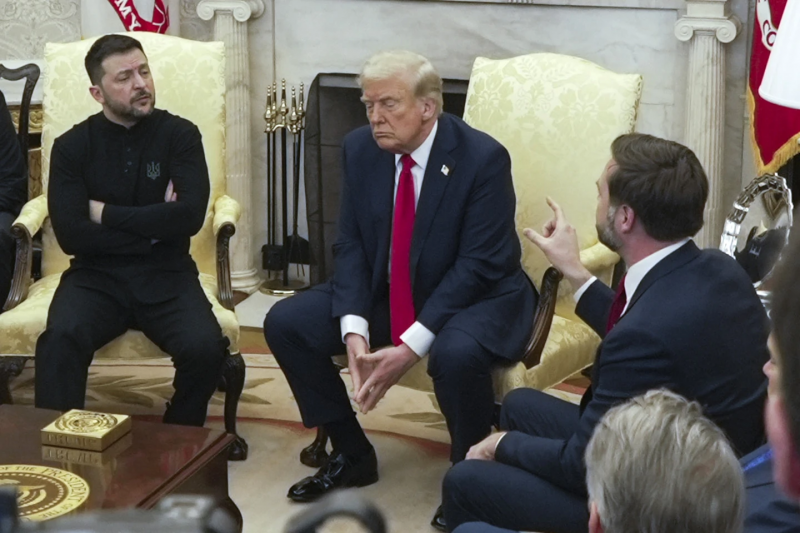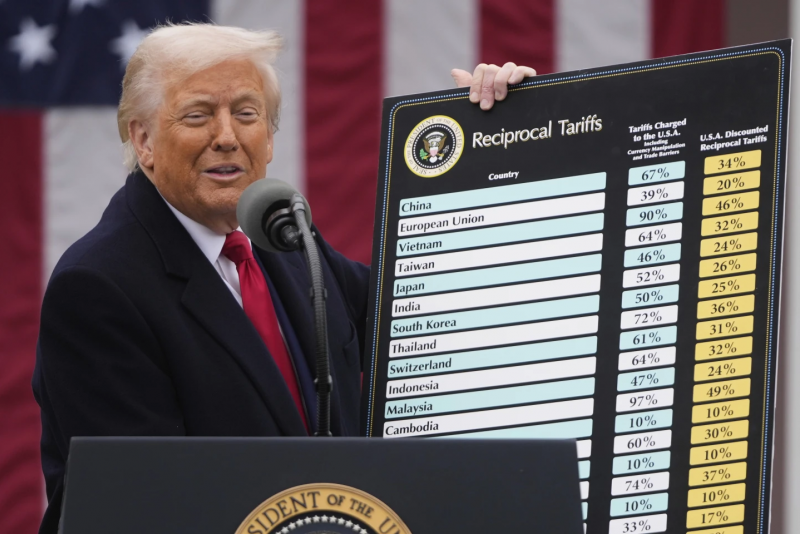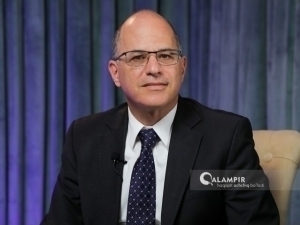Trump’s 100 days in office: What is changed in the US and the world?
Review
−
29 April 5210 6 minutes
Donald Trump, who was sworn in on January 20, 2025, began his second term as President of the United States with a flurry of activity that has already left a deep mark on both domestic and international affairs. From bold shifts in foreign policy to the imposition of new tariffs on global imports, the daily stream of headlines emerging from the White House makes the past 100 days feel far more transformative than their length suggests.
“No matter which side you are on, most people recognize that a lot has happened,” Patrick Malone, professor of public administration and politics at American University in Washington, D.C., told Deutsche Welle. He noted that Trump “has certainly been active in all directions from the beginning.”
According to DW, this strategy may be deliberate. The unrelenting pace of dramatic policy changes — many of which challenge long-standing democratic norms — appears designed to overwhelm opposition and hinder organized resistance. American citizens critical of Trump’s agenda struggle to focus their dissent: Should they protest the rollback of climate policies and plans to expand oil production? The administration’s defiance of federal court orders in deportation cases? Or its curbs on press freedom, including the exclusion of dissenting media from the White House and cuts to funding for “unfavorable” researchers and institutions?

Trump’s leadership has further polarized an already divided nation, arguably to a historic degree. But how many of his campaign promises from the 2024 election has he actually delivered on?
The Ukraine war: Peace in 24 hours?
During a 2023 campaign event in New Hampshire, Trump boasted that he would end the war in Ukraine within 24 hours of taking office.
“Both Russians and Ukrainians are dying. I want to stop them dying, and I will do it, within 24 hours,” he declared.
However, the war continues. In an interview with Time magazine, Trump admitted the statement was partly made in jest.
“Obviously, people knew I was joking when I said it, but at the same time I was saying that I wanted to end the war,” he clarified.

Despite his ambitions, Trump has not achieved a breakthrough. Instead, his administration has taken a more conciliatory stance toward Moscow. His first phone call with Vladimir Putin included concessions that favored Russian demands. Meanwhile, military aid to Ukraine has been halted. Trump and Vice President James David Vance have both criticized Ukrainian President Volodymyr Zelensky for what they described as “ingratitude.” Trump also called on Ukraine to abandon its claim to Crimea — a position that has drawn international concern.
Discontent is growing among Western allies. Trump’s skepticism toward NATO has resurfaced, and he recently stated that the U.S. would not defend alliance members that, in his view, spend too little on defense. Although he later softened his stance, trust in the U.S. among European partners has visibly declined.
Immigration: “Deporting bloodthirsty criminals”
Immigration policy remains one of Trump’s signature issues. At an October 2024 rally in New York, he vowed to initiate the largest deportation effort in U.S. history, promising to imprison and swiftly expel foreign nationals with criminal records.

In February 2025, roughly 11,000 people were deported — slightly fewer than the 12,000 deported in February 2021, during the first month of the Biden administration. Nonetheless, under Trump, illegal border crossings from Mexico have dropped, according to NBC News.

“Trump has certainly made immigration more difficult. Some people see this as a success, and some see it as a violation of American values,” said Professor Malone.
Economy: “America is back”
Donald Trump pledged that under his leadership, the U.S. economy would soar. A centerpiece of his campaign was to “make America great again” — starting with lowering prices. Much like his promise to end the war in Ukraine on day one, he suggested economic relief would be immediate.
In some areas, the administration can claim modest success. Gasoline prices have declined, as have the costs of airline tickets and hotel accommodations. Inflation, particularly when excluding volatile categories like gas and food, has slowed. According to the *Associated Press*, core inflation rose by only 2.8 percent in March 2025 compared to the previous year — the lowest annual rate in four years.
“The president’s policies are holding back inflation. Combined with changes in trade, this means that America is coming back,” said Stephen Miran, Trump’s chief economic adviser, in an interview with CNBC.
However, the lived experience of many Americans tells a more complicated story. A weekly trip to the grocery store still costs an average family of two upwards of $150. While some macroeconomic indicators have improved, everyday essentials remain expensive.
Tariffs: “Ending the outrageously open borders"
Following his election victory, Trump declared an end to the “atrociously open borders” of U.S. trade policy. A key objective was to eliminate the trade deficit by imposing reciprocal tariffs on all trading partners. That promise materialized in April, and in some cases, U.S. tariffs now exceed those of its counterparts.

While these measures were designed to protect American industry and labor, they have come at a cost. Several imported goods have become more expensive, raising costs for consumers and placing strain on long-standing trade relationships.
According to a survey by the Pewinion Research Institute, public sentiment has shifted notably. In February, before Trump’s inauguration and the tariff surge, 40 percent of respondents expected the economy to improve by the following year, while 37 percent anticipated a decline. By April, only 36 percent remained optimistic, while 45 percent feared a downturn.
Governance instability: Reversals and rehires
Beyond policy content, the manner in which the Trump administration has governed has raised alarms. The rapid rollout and reversal of executive actions, especially regarding tariffs, have created a climate of uncertainty.
“The first 100 days were full of noise and headlines, but that doesn’t mean it’s all progress,” said Professor Malone of American University.
This unpredictability extends to personnel decisions. In numerous departments, mass layoffs were followed by abrupt rehirings when expertise proved indispensable, particularly in critical sectors like aviation and nuclear safety.
“It’s very difficult to govern in this way. Any government needs consistency, predictability, and stability. We don’t have those things right now,” Malone warned.
Live
All



